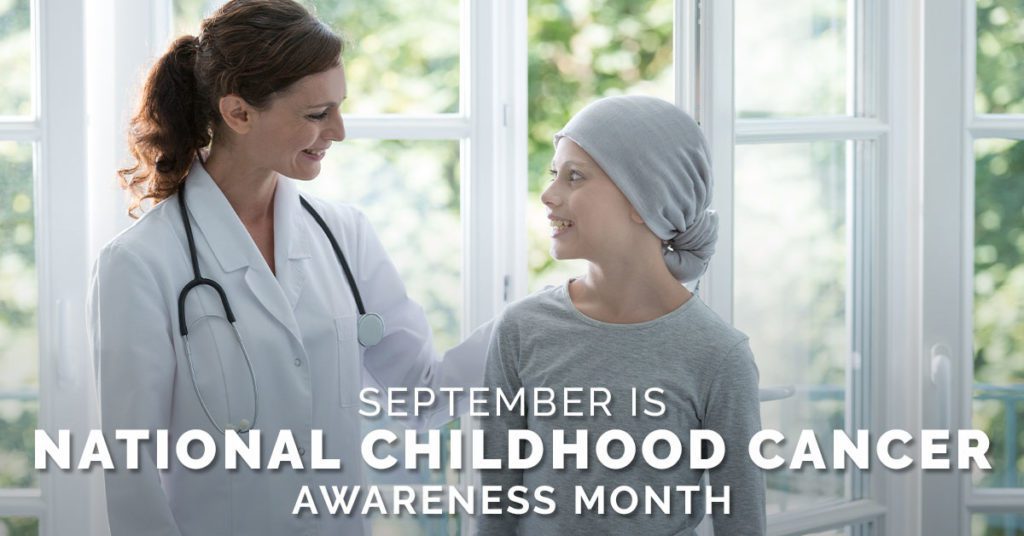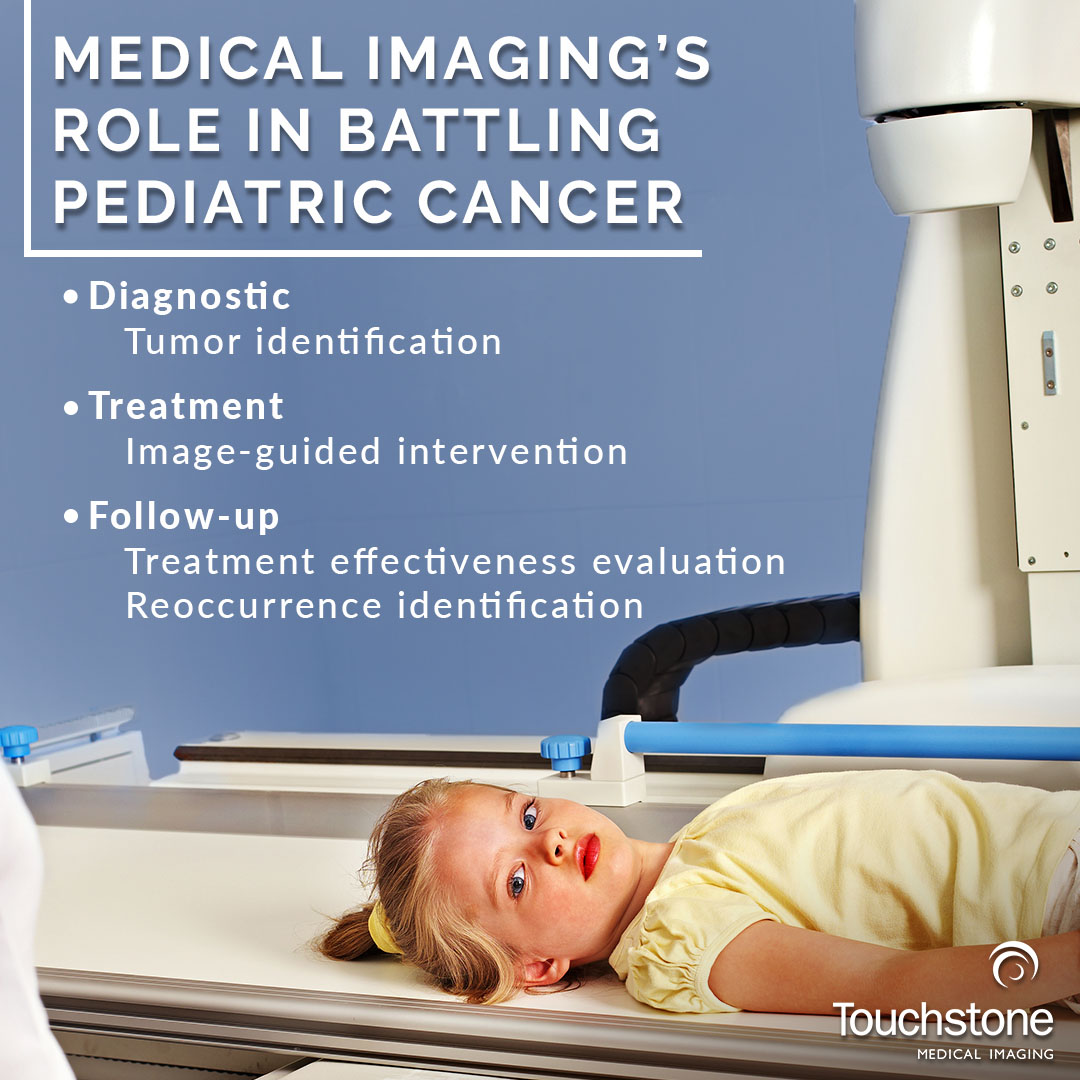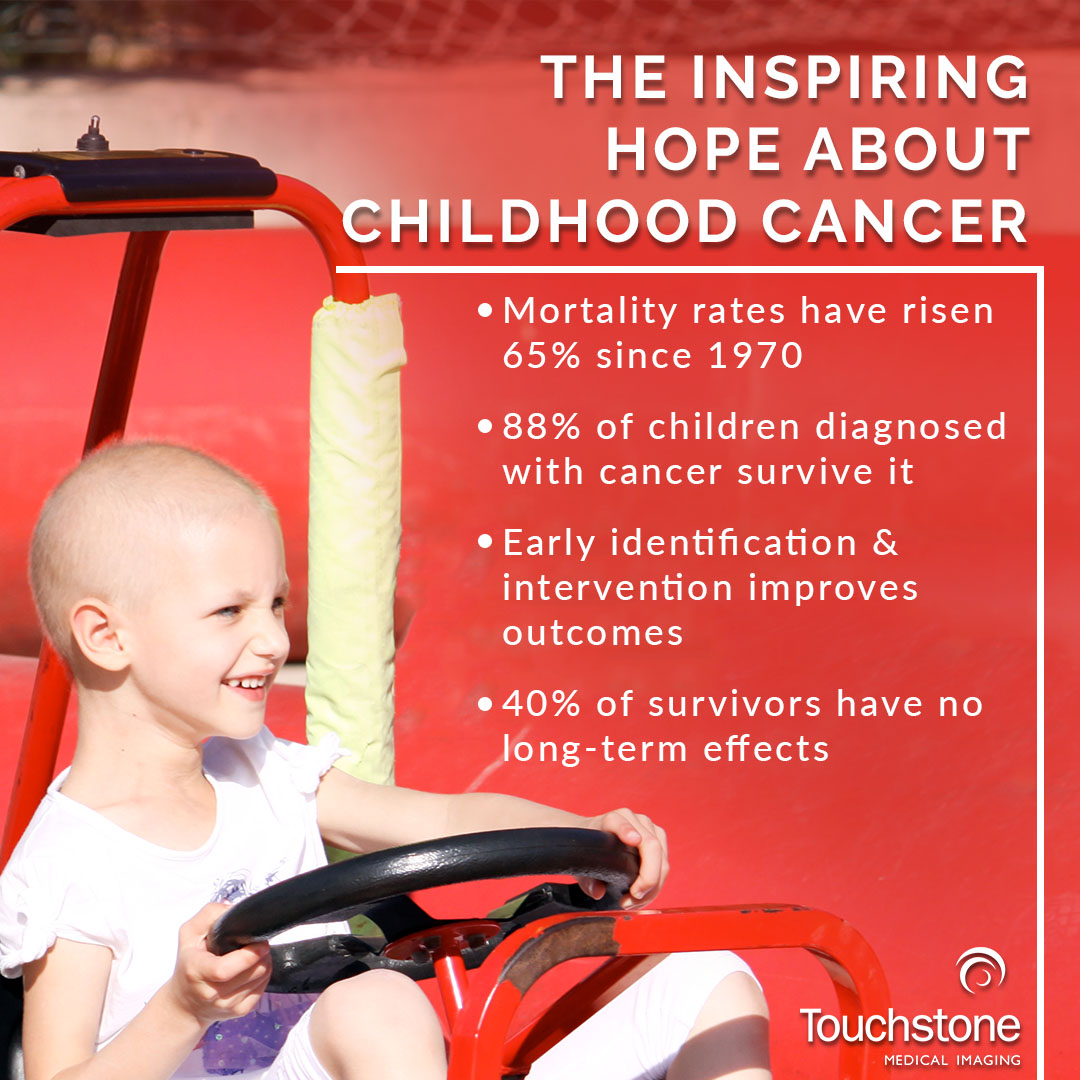Pediatric cancer accounts for nearly 1% of all cancer diagnoses in the United States and results in nearly 15,600 children under the age of 19 diagnosed each year. Compared to adult statistics, these numbers seem minimal. However, the lives of nearly 1,200 American children are claimed by cancer each year, and if you ask us that is 1,200 too many. September has been designated childhood cancer awareness month to shed light on diseases that affect a small population of children but also thousands of people who care for them. In today’s post, we will discuss some childhood cancer statistics and how Touchstone Imaging is helping.
Pediatric Cancer Awareness
We talk about childhood cancer to help bring about change and help others find hope through early diagnosis. Since 1970, the mortality rate of childhood cancers has risen from less than 10% to nearly 90%, due in part to awareness and advances in medical technology that allow us to identify cancer and begin treatment before it has reached advanced stages. The purpose of Childhood Cancer Awareness Month is to shine a spotlight on the types of cancer that affect children, discuss issues relating to surviving, and help raise money for research, medical care, and family support. Most cancer organizations and research funding only contribute to cancer that affects adults.
Understanding Common Childhood Cancers
September is designated as Childhood Cancer Awareness month. The most common cancers in adults are breast, lung, prostate, colorectal, and melanoma (skin). So, it seems natural that these cancers are the most heavily researched, well-understood, and screened for most often. However, the most common cancers in children are leukemia, brain tumors, lymphoma, and bone. Cancer screening is not a routine part of well-child checkups or school physicals, so screening is limited to what symptoms warrant.
Leukemia
Leukemia is the most common type of childhood cancer, which affects white blood cells. White blood cells are what fight infection and protect the body from bacteria, viruses, and help the healing process when you are injured. Leukemia originates in the bone marrow, causing the release of abnormal white blood cells that crowd out healthy cells and make children susceptible to infection. Many times, leukemia is not diagnosed until healthy white blood cells are crowded out and the child’s immune system is rendered ineffective. Leukemia is treatable and with early diagnosis, outcomes are positive.
Brain and CNS Tumors
Brain and central nervous system (CNS) cancers are some of the most common in children. Tumors may be cancerous (malignant) or benign and may form on the brain, spinal cord, or cerebellum. Whether tumors are malignant or benign and depending on their location, they can cause significant alterations in personality and ability to do things. Malignant tumors can grow and spread, causing cancer to metastasize in other parts of the body. Survival is dependant on how quickly it is identified and treated and where it has metastasized. Benign tumors are much easier to treat and have better outcomes because although they can grow, they do not spread.
Lymphoma
Like leukemia, lymphomas are blood cancers, affecting the bone marrow. Lymphomas are divided into two types, based on whether or not there is a presence of cancerous cells. Hodgkin’s lymphoma includes the presence of malignant cells. Non-Hodgkin’s lymphoma is cancer that affects the white blood cells. Both lymphomas are treatable with chemotherapy.
Neuroblastoma
Neuroblastomas are rare, representing less than 7% of childhood cancers. Neuroblastomas develop in the nerve cells of an embryo or fetus and can manifest in infancy or toddlerhood. The tumor can begin anywhere in the body, and depending on the type of neuroblastoma, it may spread. Neuroblastomas are treatable and outcomes are favorable if the cancer is caught before it has spread.
What Touchstone Imaging Centers Are Doing About It
Medical imaging plays a big role in the detection, treatment, and management of childhood cancer. For instance, when a tumor, bone cancer, or neuroblastoma is suspected, an x-ray, CT scan, or MRI may be ordered to take a closer look at the tumor and sites cancer may have metastasized. Bone cancer may also require a bone scan or PET scan. The radiologist’s impressions, along with other diagnostic test results will be reviewed by the oncologist to make a clinical diagnosis and develop a treatment plan.
Once the child has begun treatment for their cancer, follow-up CT scan, MRI, or PET scan may be repeated to ensure the treatment is working and to monitor for reoccurrence. Medical imaging procedures may be difficult for children to process. At Touchstone Imaging, we work with children of all ages (and their parents) to make the experience a comfortable one. Our imaging technologists are great at answering all of your child’s questions and supporting their natural curiosities. In the battle against childhood cancer, Touchstone Imaging stands on the front lines, helping children and their parents through their journey.
The Future of Childhood Cancer
The future of childhood cancer is aimed at researching and finding treatment options for those cancers that still do not have effective treatments. A lot of focus is placed on researching and trialing immunotherapy and gene therapy to help prevent cancer and attack cancer cells.
With 90% of children surviving more than 5 years after their diagnosis, more attention must now be paid to long-term effects and relapse.
The future of childhood cancer looks hopeful. With more awareness, donations, and research, trials and treatments can be administered to directly battle cancer in children. While we celebrate small victories and look toward the future hopefully, the threat of cancer is still very real for nearly 16,000 families that will receive a diagnosis of cancer in their child this year.
At Touchstone Imaging, we are doing our part to raise awareness and help children who suffer from cancer find the treatment and cure they deserve. For all of your and your child’s medical imaging needs, visit us online to find a location near you and contact us to schedule your appointment.
For more information about childhood cancer and how you can help raise awareness this September, visit these resources.





